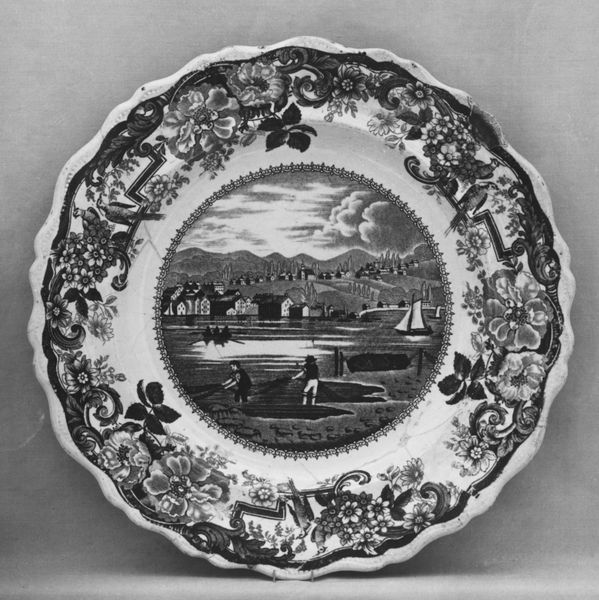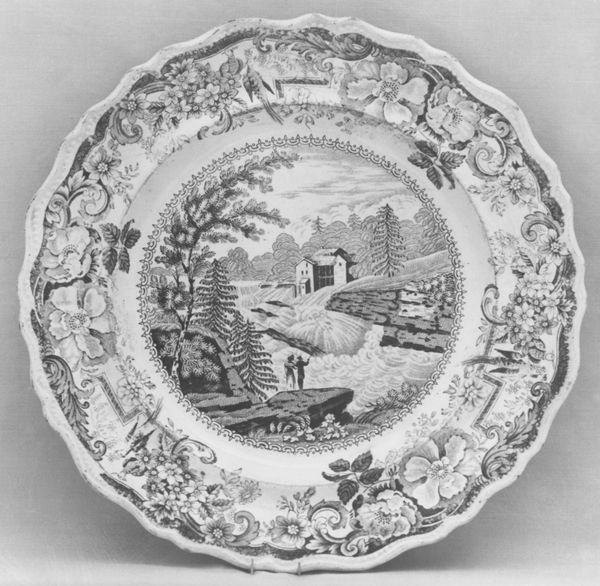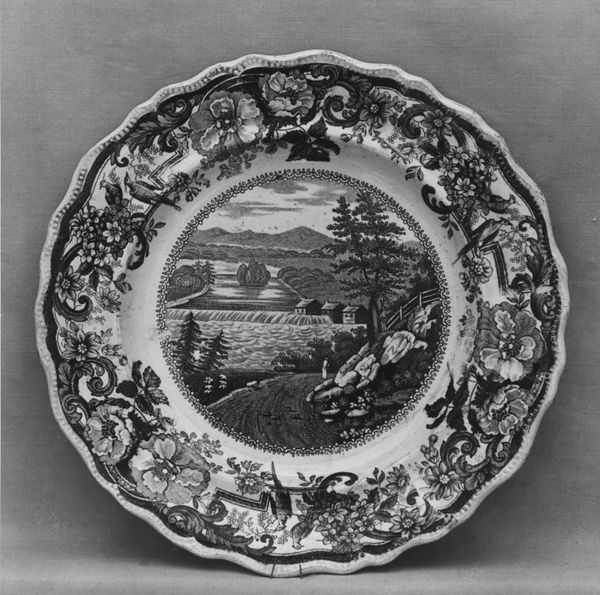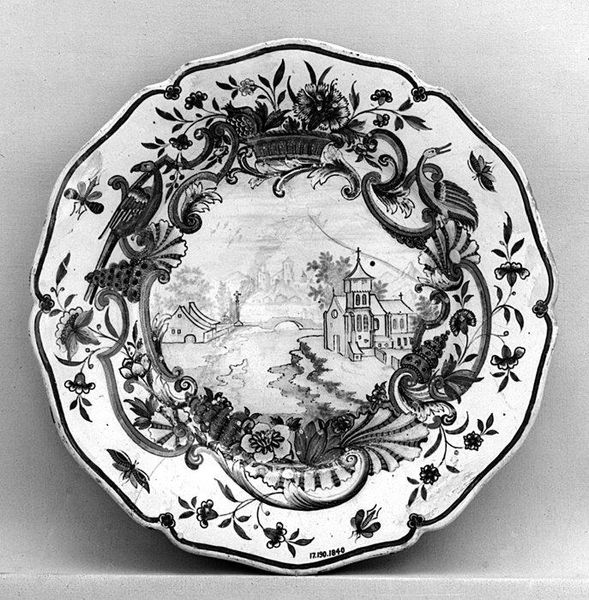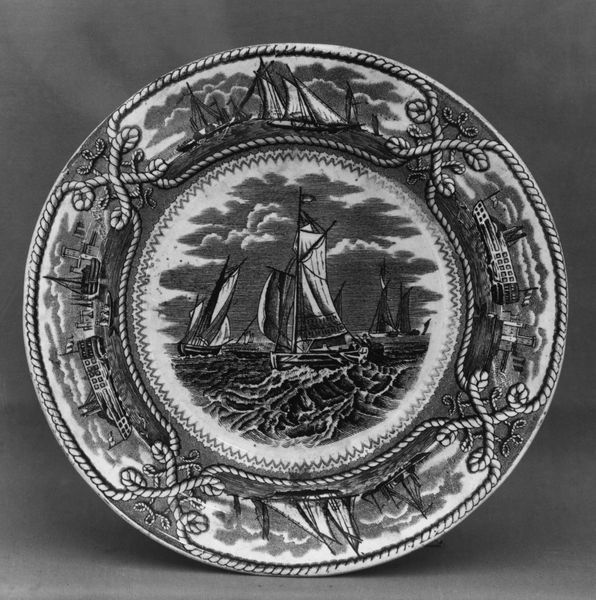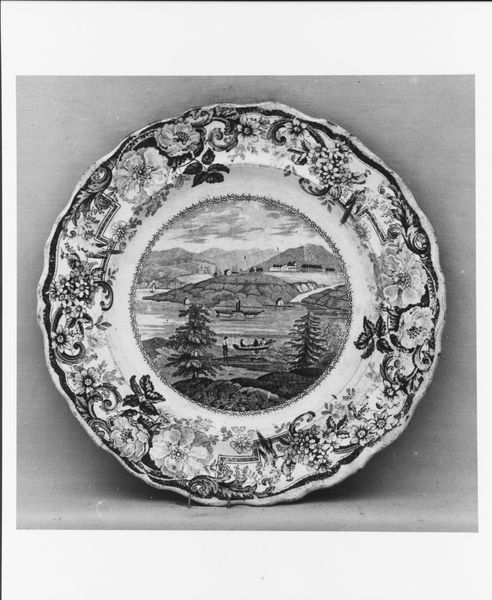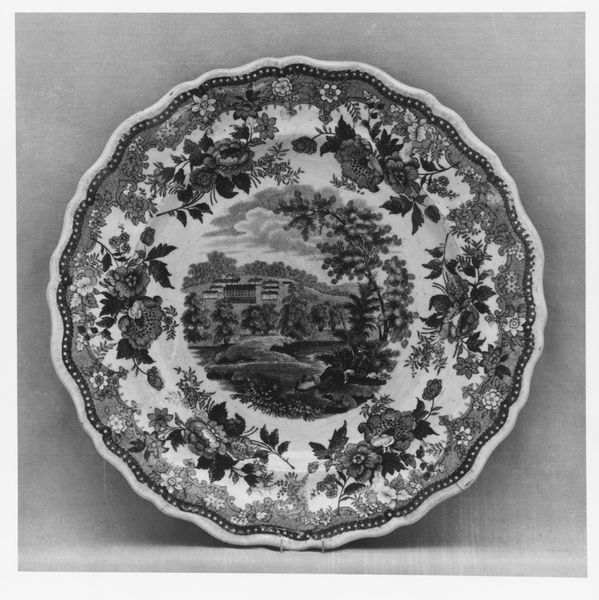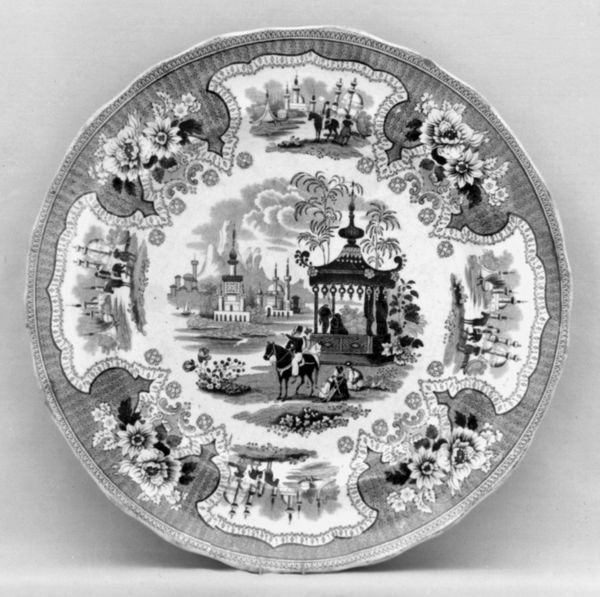
ceramic, earthenware
#
decorative element
#
sculpture
#
landscape
#
ceramic
#
flower
#
earthenware
#
stoneware
#
romanticism
#
orientalism
#
decorative-art
Dimensions: Diam. 10 1/2 in. (26.7 cm)
Copyright: Public Domain
Editor: Here we have a ceramic plate by James and Ralph Clews, made sometime between 1826 and 1837. What strikes me is the juxtaposition of the central scene, a bustling industrial waterfront, and the surrounding ornate floral border. It's… unexpectedly charming? What do you see in this piece? Curator: The charm you describe speaks to the powerful role decorative arts played in shaping perceptions of industry and progress in the 19th century. The romantic landscape scene is carefully framed. But look closely - the townscape pulses with industry, factories belching smoke, which complicates any straightforward idyllic reading. Editor: So, the seemingly innocent decoration is actually loaded with commentary? Curator: Precisely! Mass-produced ceramics like these weren't just functional; they were powerful tools for disseminating social and political ideas. Imagine this plate in an ordinary household; it brings a vision of industrial might right into the domestic sphere. Who do you think purchased this type of plate? Editor: Well, with it being earthenware, it was probably the middle class who could afford decorative pieces. It makes me wonder how they viewed these depictions of booming cities! Curator: Exactly! Plates like this became vehicles for aspirational and, frankly, propagandistic messaging. It’s not simply about the beauty of a flower arrangement; it's about promoting a particular vision of progress. Editor: So it’s like a subtle, yet potent form of early public relations. Fascinating! I never would have considered the politics embedded in something so seemingly commonplace. Curator: That’s exactly the power of art history! We have to consider the social impact these everyday images held.
Comments
No comments
Be the first to comment and join the conversation on the ultimate creative platform.
